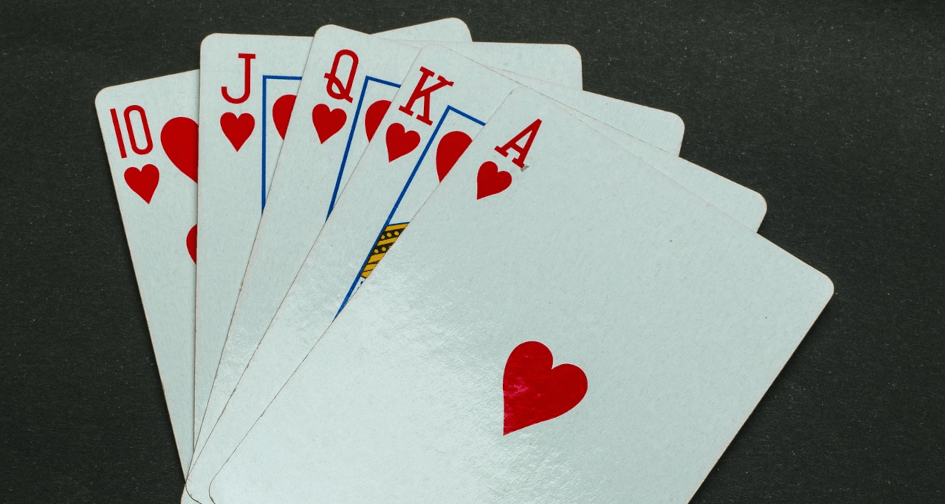What do you know about the history of the creation of playing cards? Playing cards have existed for centuries but there is much debate as to where it originated. Some scholars say it originated from Europe, while others insist it originated from Asia. Whichever way, playing cards are an integral part of human history. Their uses varied from games to fortune-telling or omen interpretation to gambling, among others. Indeed, cards have come a long way, evolving from what they used to be. In the past, cards did not have the fifty-two decks that it now possesses. In the same vein, the symbols were not always there.

What Is The History of The Creation of Playing Cards?
Playing Cards In Asia
Generally, more researchers and history specialists concur that Asia, especially China, created the game of playing cards. They follow the starting point of card games back to the Tang Dynasty of 618 A.D. Note that playing card games existed in Asia as early as the 11th century. Undoubtedly, numerous writers have composed and distributed written works on this subject. Most importantly, Su E of the Tang Dynasty wrote a collection concerning this. In the book, this writer captures how a Princess of Tang played a game of cards in the leaf game with her significant other’s family members. The popular book Yezi Gexi, whose writer’s name is unknown, discusses playing a card game. Frequently, other Chinese scholars reference this book while examining the historical backdrop of playing a game of cards.

Additionally, Ouyang Xiu of the Song Dynasty thinks that playing a game of cards dates back to the mid-Tang Dynasty period. Likewise, the researcher contends that playing card games impacted the development of sheets as a method for composing. Furthermore, the Ming Dynasty of the fourteenth century saw playing cards utilizing characters from notable books to be printed on their bodies.
Playing Cards in The East And Their Introduction To The European World
As referenced effectively in this article, a few researchers contend that playing a game of cards began in Europe. Notwithstanding, history presents facts that playing card games came to Europe through importation. This is said to have occurred between the late fourteenth century and the mid-fifteenth century. Numerous history specialists concur that merchants or wanderers carried playing card games to Europe. Some even think that playing card games came into Europe during the crusades.
Be that as it may, a few students of history contend another case. They state that the Mamluks carried playing a game of cards to Europe. The Mamluks were important people in Egypt with their societal position of high status. Their cards involved thirteen cards each and had four suits that engraved coins, cups, twirly doos, and blades.
Playing A Game of Cards in Europe: Italy
As referenced before, students of history follow the origin of playing card games in Europe to the fourteenth century. Confirmation of this exists in a 1377 composition composed by a German priest, Johannes, who hailed from Switzerland. In his original copy, he expounds on different playing cards and how to play them.
In time past, Italians considered playing a card game an excellent and luxurious activity.
Accordingly, only those who occupied high positions could afford to play it. As the years passed, the rich and influential were no longer the only ones to play card games. Cardmakers started to make less expensive adaptations of their cards for working-class individuals and the average citizens. Consequently, playing cards became prominent, and in a matter of time, everybody could play the game.
Playing Cards: The German Invasion
As playing cards grew in popularity, it spread to Germany. Some scholars agree that the German soldiers helped to push this spread as they were lovers of the game. As Germany grew in might, they had to express their dominance in various ways. One of these ways included manufacturing their own and changing the outlook of playing cards. As explained already, playing cards spread from Italy to Germany. To assert their power, the Germans then removed all the Italian symbols from the cards. Next, they printed their pips on the cards. The symbols consisted of hearts, leaves, hawk-bells, and acorns. Also, instead of Ace as the highest card, it became the Two. In addition to this, they replaced the Italian suits with theirs. So, instead of a queen, it became a King and two court attendants.
This new alteration slowly gained prominence and consequently became a part of playing card history in Europe. The German’s way of manufacturing playing cards was unique in its own right. First, they imitated the technique implored in cutting woodblock and copper. They did this using their hands. It is essential to mention that this was a cheap alternative to printing cards. Next, they printed these cards in surplus amounts. After that, they marketed their cards and even back to the countries that were first to manufacture playing cards. These new cards became so popular that they pushed the Italian ones out of the market.
Playing Cards In Europe: France
Often, some scholars credit France with manufacturing the first playing cards. As shown by this article, that is not accurate. However, the French people contributed significantly to playing cards as far back as the fourteen hundreds (1400). They initiated the symbols: diamonds, hearts, spades, and others, on playing cards that are popular today. For their court cards, the French people used a king and a queen. They used these instead of only one of the two as their predecessors.
One notable achievement of the French people towards the creation of playing cards was their manufacturing method. The Germans had used a cheap alternative of cutting woodblocks to manufacture their cards. However, the French people used stencils to produce theirs. This was a more affordable, faster, and less stressful way of creating the cards.
As printing methods advanced, people began to prefer paper to other writing materials. In respect to this, playing refused to be left behind. The French cardmakers used the new printing methods to their advantage to make printing cards easier. As a result of this, they pushed the German cards out of the market.
Playing Cards Named After Biblical Characters and Other Literature
Due to the prevalence of Christianity, the French cardmakers began naming cards after Biblical characters and other literary characters. They did this mainly for kings and other high lords. The cards named were as follows:
Spades were called King David
Diamonds became Julius Caesar
Clubs was Alexander the Great
Hearts were known as Charlemagne
They rename the cards after great Biblical and other literary characters, and they meant them to represent four realms. These four realms were that of the Romans, the Greeks, the Jews, and the Franks. Other cards named after religious characters were:
Rachel and Hector which replaced Diamond
Judith, for which they called Hearts
Argine and Lancelot, which replaced Clubs
Athena and Ogier, for which they named Spades after.
Playing Cards Become Forbidden
Earlier, this article told you that new printing methods saw to playing cards accessed by all. Everyone could now enjoy a game of playing card, social status regardless. Due to the availability and accessibility of these playing cards, gambling entered the scene. Before long, gambling became a popular activity. Religious people and those who held to a higher form of moral standing began to worry. At the time, the church and the state were in a position of power. Thus, these people expressed their worry to the rulers. They urged the church to do something about playing cards. They relayed their fears about playing cards were causing people to gamble thus, encouraging sin. The mounting pressure caused the church and the state to step in to curtail the spread of playing cards.

The church began to speak more on playing cards. They associated them with tools of sin and evil thus, banning their members from using them. They told their members that playing cards would make them lose their salvation. As a result of this, many believed and stopped playing cards.
Similarly, the state of Florence outlawed every activity that had to do with gambling. This happened in 1376. In 1423, St Bernardine of Siena led a crusade against the use of playing cards. This crusade gained general acceptance that St Bernardine ordered people to make a public fire where they destroyed many cards. This is all we have on the creation of playing cards.
Conclusion
Now you know the history of the creation of playing cards. So, the next time you enjoy a game of playing cards, remember how these flat pieces have come a long way in society.



